Refrigerator Freezer Combos
-
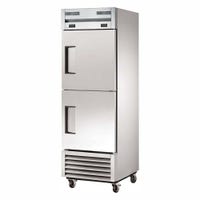 True T-23DT-HC 2 Half Door Dual Temp Reach-In Refrigerator/Freezer Combo | 19 Cu. Ft.Free ShippingQuick ShipPrice From: $7,204.15 / Each
True T-23DT-HC 2 Half Door Dual Temp Reach-In Refrigerator/Freezer Combo | 19 Cu. Ft.Free ShippingQuick ShipPrice From: $7,204.15 / Each -
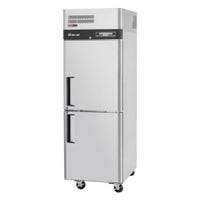 Turbo Air M3RF19-2-N M3 Series 2-Solid Half Door Dual Temp Reach-In Refrigerator / FreezerFree ShippingQuick ShipBurkett Price: $5,166.25 / Each
Turbo Air M3RF19-2-N M3 Series 2-Solid Half Door Dual Temp Reach-In Refrigerator / FreezerFree ShippingQuick ShipBurkett Price: $5,166.25 / Each -
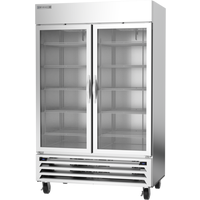 Beverage Air HBRF49HC-1-A-G Refrigerator Freezer, Reach-InFree ShippingBurkett Price: $11,427.20 / Each
Beverage Air HBRF49HC-1-A-G Refrigerator Freezer, Reach-InFree ShippingBurkett Price: $11,427.20 / Each -
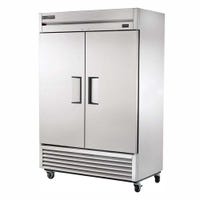 True T-49DT-HC 2-Door Dual Temp Reach-In Refrigerator/Freezer ComboFree ShippingQuick ShipBurkett Price: $9,004.65 / Each
True T-49DT-HC 2-Door Dual Temp Reach-In Refrigerator/Freezer ComboFree ShippingQuick ShipBurkett Price: $9,004.65 / Each -
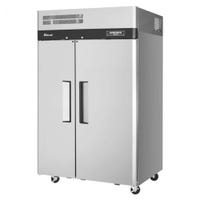 Turbo Air M3RF45-2-N M3 Series 2-Solid Door Dual Temp Reach-In Refrigerator / FreezerFree ShippingBurkett Price: $8,447.82 / Each
Turbo Air M3RF45-2-N M3 Series 2-Solid Door Dual Temp Reach-In Refrigerator / FreezerFree ShippingBurkett Price: $8,447.82 / Each -
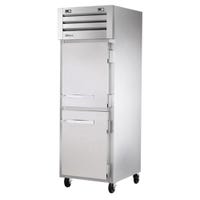 True STA1DT-2HS-HC 2 Half Door Dual Temp Reach-In Refrigerator/Freezer Combo | 26 Cu. Ft.Free ShippingBurkett Price: $7,930.33 / Each
True STA1DT-2HS-HC 2 Half Door Dual Temp Reach-In Refrigerator/Freezer Combo | 26 Cu. Ft.Free ShippingBurkett Price: $7,930.33 / Each -
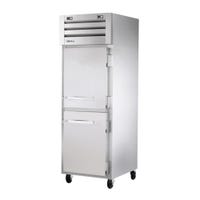 True STA1DTA-2HS-HC 2 Half Door Dual Temp Reach-In Refrigerator/Freezer Combo | 26 Cu. Ft.Free ShippingBurkett Price: $7,930.33 / Each
True STA1DTA-2HS-HC 2 Half Door Dual Temp Reach-In Refrigerator/Freezer Combo | 26 Cu. Ft.Free ShippingBurkett Price: $7,930.33 / Each -
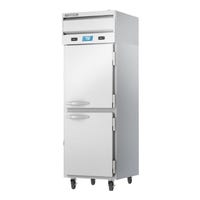 Beverage-Air CT12-12HC-1HS 2-Solid Half Door Convertible Reach-In Refrigerator / Freezer | 18 Cu. Ft.Free ShippingBurkett Price: $8,377.74 / Each
Beverage-Air CT12-12HC-1HS 2-Solid Half Door Convertible Reach-In Refrigerator / Freezer | 18 Cu. Ft.Free ShippingBurkett Price: $8,377.74 / Each -
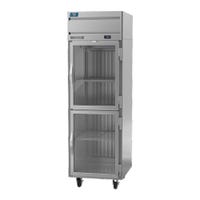 Beverage-Air CT1HC-1HG Half Glass Door Top Mount Reach-In Refrigerator Freezer Combo | 23 Cu. Ft.Free ShippingBurkett Price: $6,885.03 / Each
Beverage-Air CT1HC-1HG Half Glass Door Top Mount Reach-In Refrigerator Freezer Combo | 23 Cu. Ft.Free ShippingBurkett Price: $6,885.03 / Each -
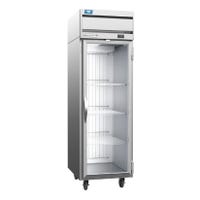 Beverage-Air CT1HC-1G 1-Glass Door Convertible Reach-In Refrigerator / Freezer | 23.1 Cu. Ft.Free ShippingBurkett Price: $6,596.28 / Each
Beverage-Air CT1HC-1G 1-Glass Door Convertible Reach-In Refrigerator / Freezer | 23.1 Cu. Ft.Free ShippingBurkett Price: $6,596.28 / Each -
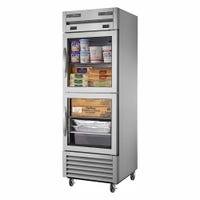 True T-23DT-G-HC~FGD01 2-Half Glass Door Dual Temp Reach-In Refrigerator/Freezer Combo | 19 Cu. Ft.Free ShippingPrice From: $9,812.13 / Each
True T-23DT-G-HC~FGD01 2-Half Glass Door Dual Temp Reach-In Refrigerator/Freezer Combo | 19 Cu. Ft.Free ShippingPrice From: $9,812.13 / Each
Save on floor space without sacrificing storage with a commercial refrigerator freezer combo.
Commercial refrigerator freezer combos house refrigerated storage and freezer storage in the same unit. A single section refrigerator freezer combo will have split or half size doors with separate compartments. The refrigerator is typically at the top of the unit and the freezer at the bottom. Two or three section refrigerator freezer combo units can have split, full length, solid or glass doors, with each section being split vertically for each refrigeration type.
For businesses with smaller spaces, commercial refrigerator freezer combos can fulfill any food storage needs without taking up valuable floor space. With a commercial refrigerator and freezer together in one unit, you'll have more space for other equipment needed to run your commercial kitchen. Another benefit of these combo units is the ability to store refrigerated meats, dairy, eggs, or other common food allergens in the same unit as frozen desserts without risking cross-contamination.
Consider compressor location, number of doors, and your restaurant's available space when choosing the right refrigerator freezer combo for your business. To keep up with the temperature in each section you may want to keep a thermometer inside as well. Even if your unit has a built-in thermometer, you can never be too careful when it comes to food safety. You will find dual temp refrigeration units that are perfect for your commercial kitchen from great brands like True Refrigeration and Turbo Air.
Installation Considerations
- Moving process - Determine the distance from the point of entry to your restaurant and the placement of the unit in the kitchen by measuring door frames and tight passages. Ensure that your reach-in refrigerator freezer combo can pass any obstacles. If you are replacing or upgrading an existing commercial refrigerator, it may be beneficial to plan the installation into the kitchen for before or after work hours.
- Ventilation space - To calculate out how much space you need to allow for air flow, consult the provided spec sheet. Compressors are often located at the top or bottom of commercial refrigerator/freezer combos. You should plan to have the appropriate amount of space dedicated to airflow based on how your new refrigerator is configured in this area. By doing this, you'll be able to maintain the effectiveness and efficiency of your reach-in refrigerator/freezer for many years to come.
- Floor space - Make sure the floor of the area you've chosen for the unit is level. If units are unbalanced and prone to topple over, they pose a working hazard. For the optimal performance and lifespan of your investment, you'll also want to make sure that it is not installed too close to any equipment that produces heat or is susceptible to moisture.
- Power supply - Examine the spec sheet that came with your reach-in refrigerator/freezer combo to determine what kind of electrical connection it requires. You must position the unit close to an appropriate outlet that is not already being overloaded by other pieces of equipment.
Frequently Asked Questions About Commercial Refrigerator Freezer Combos
What makes walk-in refrigeration different from reach-in refrigeration?
Size is by far the most obvious distinction between reach-in and walk-in refrigerators. Large amounts of food are kept in walk-in coolers and freezers, which are rooms of their own in industrial kitchens. With a smaller footprint and built-in shelving, reach-in refrigerator freezer combos are more versatile. To store product as it waits to be moved to the front line, place a three door reach-in refrigerator freezer combo close to prep areas. Reach-in refrigerator/freezer combo units are a remarkably versatile refrigeration choice that can be used for a range of tasks in a commercial kitchen.
How does a commercial refrigerator freezer combo work?
A reach-in unit draws ambient air through its compressor, much like most commercial refrigeration, cooling and forcing the air throughout the interior of the unit. Despite having similar exterior designs, commercial reach-in refrigerators and freezers have quite different specifications. Due to these differences, a combo unit will have multiple systems in one, heavy-duty, unit.
- Temperature holding- Any refrigerator used for a commercial environment must maintain temperatures at or below 40 °F. Commercial freezers will hold temperatures at or below 0°F, frequently down to –10°F. Reach-in freezers almost always have a more powerful refrigeration system to achieve these interior temperatures. In a combination unit, each section is insulated to keep the proper temperature in each section.
- Horsepower- Commercial reach-in freezers and refrigerators utilize compressors and a refrigerant of some kind to maintain cold holding temperatures. A greater horsepower system will be required for commercial freezers. In order to maintain the cooler temperatures, their compressors will also need to run more frequently. In a combination unit, there will be two separate compressors to reach the appropriate temperature in each section.
- Defrost- In most cases, commercial refrigerators don't need to be defrosted. This is a unique factor to consider for commercial freezers. An automated defrost system is provided by some manufacturers and models, which can save time and money. A reach-in freezer's performance and the life of its refrigeration unit can be negatively impacted by ice buildup. It's crucial to consider the specialized maintenance requirements for your industrial freezer. Only the freezer section will need to run a defrost cycle in a combination unit.
Should I choose a top or bottom mounted compressor?
Commercial dual-temp reach-in refrigerators often have compressors positioned on the top or bottom. Although they are usually more efficient and accumulate less dust on the coil, top-mounted compressors have a small amount of space for storage. Bottom-mounted compressors require less space near the ceiling and are easier to maintain. To ensure complete satisfaction with your new commercial reach-in refrigerator/freezer combo, choose in conjunction to your unique needs.
Glass doors or solid doors?
Depending on how it will be used, choose a commercial refrigerator freezer combination unit with solid or glass doors.
- Solid doors - If the unit will be used for back of house operations, these are a fantastic option. Solid doors are sturdy and keep sometimes messy food products hidden from customers' view.
- Glass doors - Use glass doors to showcase fresh food or drinks. If used close to the front of the house, this choice may be extremely helpful. Glass door models will showcase your company's products beautifully and often come with LED lighting. Check out merchandiser refrigerators and freezers if you're looking for retail coolers.
- Split doors - These have the widest range of customizability. Burkett has models with combination, split solid, and split glass doors. For the most options in one unit, one section could be a glass door to display products, and the other could be a solid door. These models are very versatile and an excellent choice if you only have enough room for one commercial reach-in refrigerator/freezer but need a variety of storage options.

Login and Registration Form